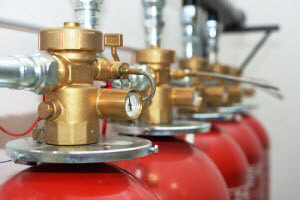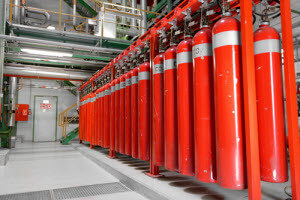Pressure Relief Devices (PRDs): Gas Cylinder Equipment Safety
Pressure relief devices (PRDs) are installed on gas valves for high- and low-pressure cylinders to minimize the risk of cylinder rupture. It’s crucial that the person who’s filling the cylinder verifies that the PRD is correct for the product. If each filler makes sure to take care of this responsibility on his or her own, everyone can be sure that this process runs smoothly and that safety is ensured.
Different Types of Pressure Relief Devices (PRDs)
 There are four PRD types. Learn more about what each one is comprised of and its purpose.
There are four PRD types. Learn more about what each one is comprised of and its purpose.
• Rupture Disk Devices: This device is a flat disk that’s typically made of metal and designed to burst at a predetermined pressure in order to permit the release of gas. The rating is usually stamped on the face of the device. It should be used for compressed air, argon, helium, nitrogen, and oxygen.
• Fusible Plug Devices: This device is a plug made of fusible metal that’s designed to yield or melt at low temperatures. The rating of the metal’s temperature is stamped onto the device. The gas that uses this type of device is acetylene.
• Combination Rupture Disks: A rupture disk is backed by the previous fusible plug. If there’s a fire, the fusible metal will melt, and the cylinder overpressure will be relieved when the disk bursts. The burst pressure of the disk and the melting point of the plug are marked with the rating. This type of device is most commonly found with medical-grade gas cylinders.
• Pressure Relief Valves: A spring-loaded valve opens when the cylinder pressure exceeds the pressure setting of the spring to discharge contents. Once the cylinder pressure decreases to the valve’s pressure setting, the valve will normally reseat without leakage.
Pressure Relief Device (PRD) Maintenance
 Just like with any product, a pressure relief device must be maintained properly in order to perform its functions and maintain a good long-term performance.
Just like with any product, a pressure relief device must be maintained properly in order to perform its functions and maintain a good long-term performance.
Care should be taken when handling and storing compressed gas cylinders and to avoid plugging the PRD channels and parts in any way that could affect the functioning of the device.
All pressure relief devices must be examined internally for corrosion, damage, rust, plugging of relief device channels, or mechanical defects such as leakage or the extrusion of fusible metal. If there’s any question about whether the PRD is suitable, the cylinder shouldn’t be filled until the device is appropriate.
In addition, unauthorized personnel shouldn’t attempt to repair PRDs. If PRDs are repaired or reconditioned, the manufacturer may repair them provided they’re retested to confirm that they satisfy requirements.
Pressure relief devices ensure safety and reduce the risk of a disastrous event. Safety is the top priority at CPV Manufacturing, and that’s why customers rely on our products. CPV designs and manufactures products that exceed the requirement of industry and customer specifications.

